Experiencing Zambia’s Zambezi River in style
The intoxicating smell of wild jasmine fills the air, there’s a slight chill and mist rises from the river, as the sun peeps over the horizon the sky turns from pale grey, to shades of lilac and pink. We are heading downstream, towards the boundary of Zambia’s Lower Zambezi National Park.
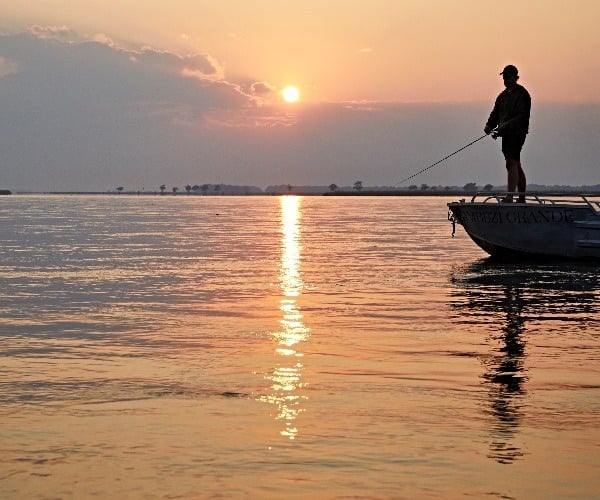
A whirring noise indicates my husband has just made his first cast of the day. Fishing for Tiger fish is a seasonal specialty of the Zambezi River and, at least as far as my husband is concerned, is one of the best safari activities of all! Tiger fish are somewhere between a trout and a piranha on the evolutionary scale, and are equipped with large bony jaws and a mouthful of razor-sharp teeth.
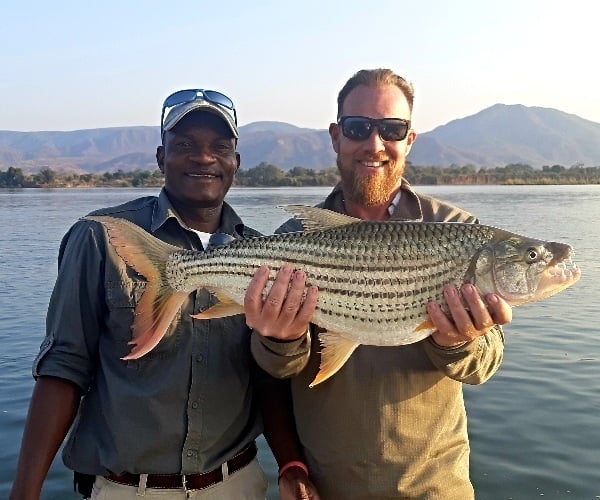
Tiger fish are renowned for their speed, agility and strong will to fight – fishing for these fresh water game fish is always a challenge. Prized species such as the coveted Tiger fish and vundu (catfish) make the Lower Zambezi any sport angler’s dream destination. Twenty minutes after his first cast, my husband is reeling in his first catch of the day, a 15.5lbs Tiger, which is followed, a few casts later, by another slightly smaller Tiger, though this one somehow manages to slip over the side on its way from the net to the scale.
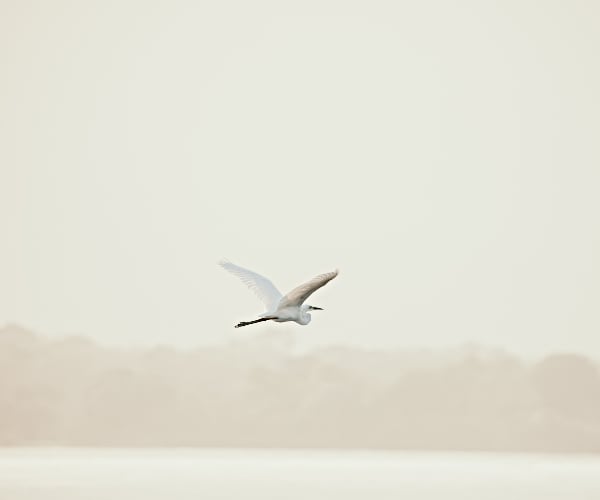

Not a keen fisherman myself, I’ve been preoccupied with the scenery. Clouds of queleas fly back to the mainland, from the islands where they’ve been roosting overnight. Black Crakes, Yellow-bill storks and Woolly-Necked storks flit and preen in the shallows. A pair of African Skimmers fly just above the water, their bright orange beaks dipping into the river, as a pair of Pied kingfishers dive repeatedly, fishing for breakfast. Pods of hippos, with nostrils, eyes and ears just above the water check us out as we drift past, and the banks are lined with crocodiles, warming themselves in the early morning sun.

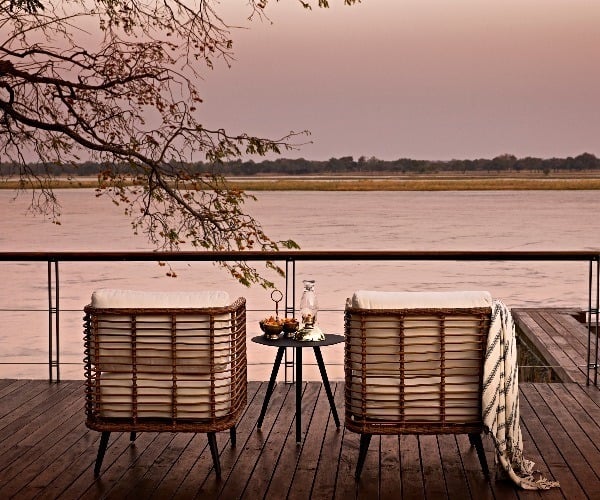
The Zambezi River, the fourth longest in Africa, passes through several countries and countless wonderful places on its journey from source to sea. Emerging from the ground as a tiny bubbling spring in north-western Zambia, the river passes through eastern Angola, along Namibia’s north-eastern border and the northern border of Botswana, then forms the boundary between Zambia and Zimbabwe, before flowing across Mozambique and ultimately emptying into the Indian Ocean. There are many special places along this extraordinary river, but one of my very favorites has to be Zambia’s magnificent and wild, Lower Zambezi National Park.
Found on the northern banks of the Zambezi, in the south east of Zambia, the Lower Zambezi National Park is 4,092km² of pristine wilderness. From herds of elephants, to soaring fish eagles, and everything in between, this is a special place. A timeless valley of giant towering Winterthorn trees, and the wildlife that find sanctuary in their dappled shade.
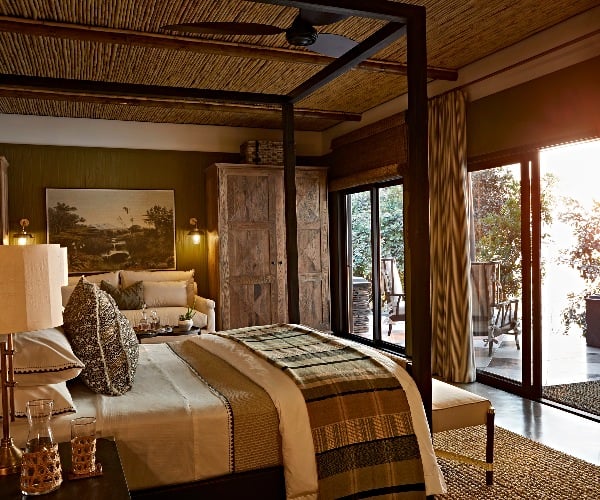
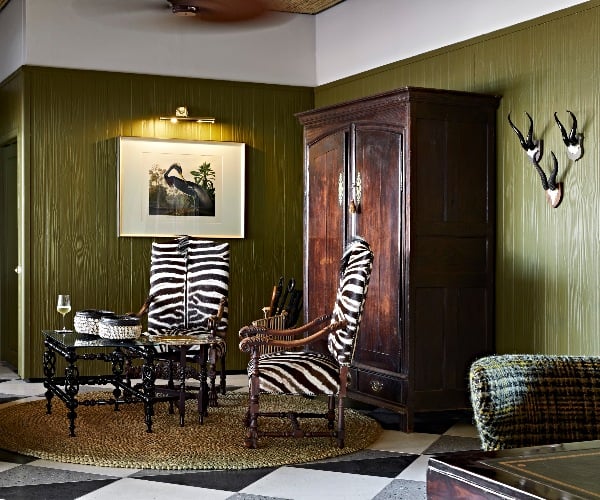
Delighted with the morning’s fishing, we slowly head back to the lodge, game viewing as we go. Zambezi Grande Private Game Experience, poised high on the banks of the Zambezi River, is a luxurious, privately owned game lodge, just minutes upstream by boat, from the Lower Zambezi National Park. In 2021 Zambezi Grande embarked on a total lodge redesign at the hands of Michele Throssell Interiors, and the result is something really special, and full of old world charm. What had been, for all intents and purposes, a Cape Dutch style holiday home on the banks of the Zambezi, underwent a transformation. The 5 free standing Superior Suites are stunning, with their riverfront settings, expansive verandas, outdoor showers and beautiful finishes. The 5 smaller, but no less lovely, Luxury Rooms, with their contemporary finishes, provide all the comfort you could want for on safari. The main area of the lodge itself, with its cleverly chosen furnishings and fabrics and carefully curated accessories, has an open plan layout, ensuring river views from wherever you stand, sit or recline. Every detail of the lodge has been carefully considered, and result of a beautifully designed space in a stunning location. (And a solar farm was installed, enabling the entire lodge to run off grid).
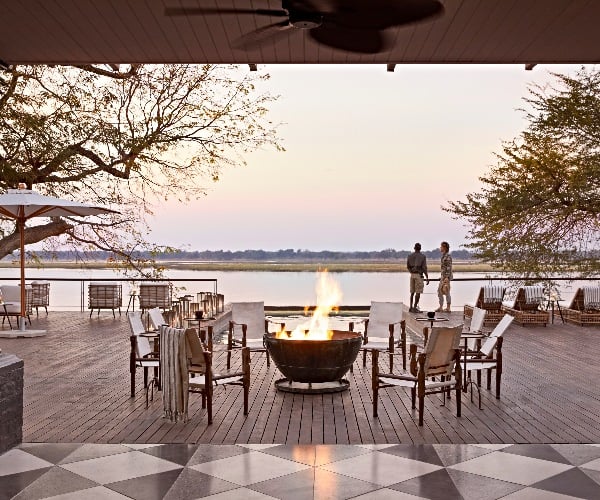
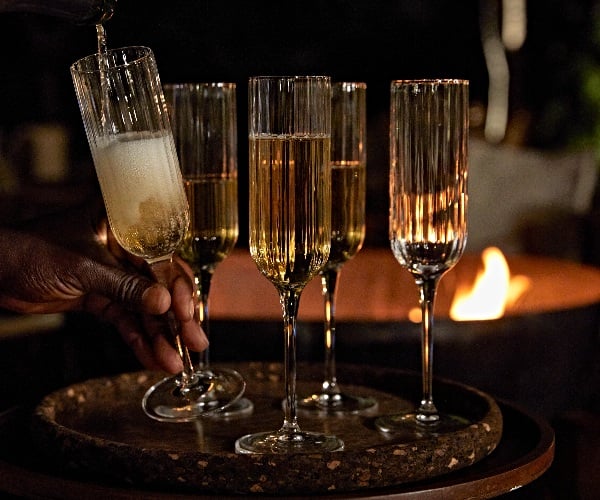
At night, when the sun has set and the dark descends, the magic of Zambezi Grande comes into its own and becomes an enchanting escape. With a blanket of stars overhead and a gentle evening breeze, we sat by the firepit, drink in hand and listened to the sound of the wild that surrounded us. An elephant trumpeted in alarm, a hippo splashed in the water nearby while a hyena called in the distance, an owl hooted and its mate returned its call, and the crickets and cicadas buzzed and chirped in the trees overhead.
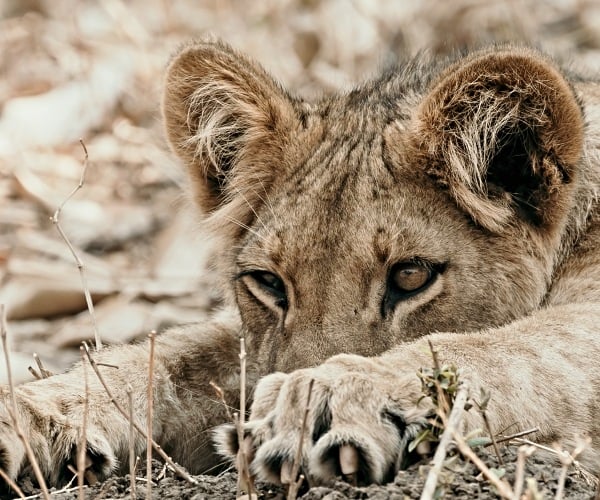

Morning, and we were up early again, but not to fish. This time heading into the park itself for a game drive. The dramatic, brown and green, folds and wrinkles of the magnificent Zambezi escarpment flatten out as they come down towards the river. Against this spectacular mountain backdrop, we head through the Winterthorn forest. The forest was full of waterbuck, males with impressive horns and females with young in tow.

Our morning was filled with sightings. Several male kudu, with their trademark corkscrew horns, herds of impala, monkeys jumped form tree to tree and baboons foraged and groomed one another on the forest floor. 6 lions lay in the shade, some crunching on the left-over bones of a waterbuck and the others resting after what had been a busy night. We rounded another corner and found a huge fallen Winterthorn tree, that had attracted a herd of elephants, 25 or 30 strong. We waited and watched as they tore apart the fallen tree, feasting on leaves, bark and twigs, and crunching their way through branches that broke with a resounding crack in their jaws. Several youngsters, who were clearly still suckling, attempted to mimic their elders by waved bunches of leaves in the air, and making comical attempts to get them in their mouths. It was wonderful to see so many elephants together – big and small, adult and baby, female and male; brought together by the feast of greenery. Once they were done with the tree, they would go their separate ways; matriarchs, mothers and babies heading one way, bulls and young males another.
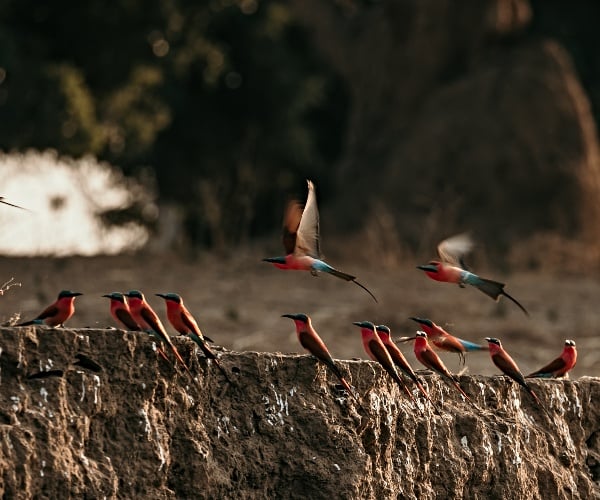
Afternoon came, and we were back on the river. Cruising past islands and sandbanks. Migratory Carmine Bee-eaters, with their vibrant colours and loud chirping calls, swooped overhead and a herd of elephants crossed the wide deep river in front of us, pausing to eat the long grass on one of the islands, before continuing to the bank on the other side.

We passed an island where two old male buffaloes, trapped for months by the high waters and the ever-present crocodiles, grazed on the lush grass. On another island, three female waterbucks, also stranded, looked pensively towards the mainland. A baby hippo stood on the river bank, reluctant to venture into the water, despite the reassuring grunts from the rest of the pod, who waited in the shallows like a mother and aunties, giving encouragement like to a toddler at a swimming lesson.
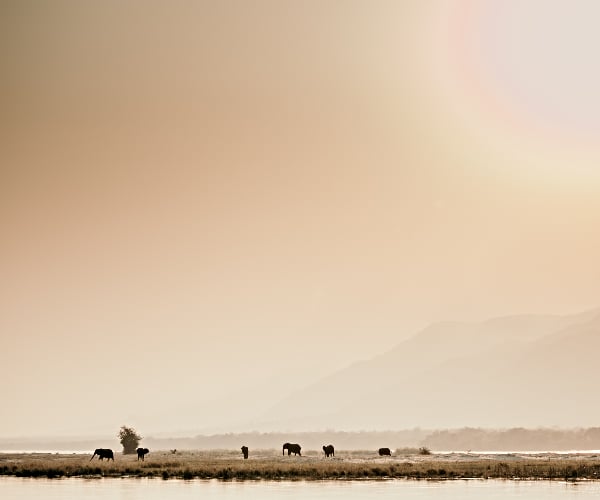
IMPORTANT NOTICE:
If you are reading this article anywhere other than on A Luxury Travel Blog, then the chances are that this content has been stolen without permission.
Please make a note of the web address above and contact A Luxury Travel Blog to advise them of this issue.
Thank you for your help in combatting content theft.
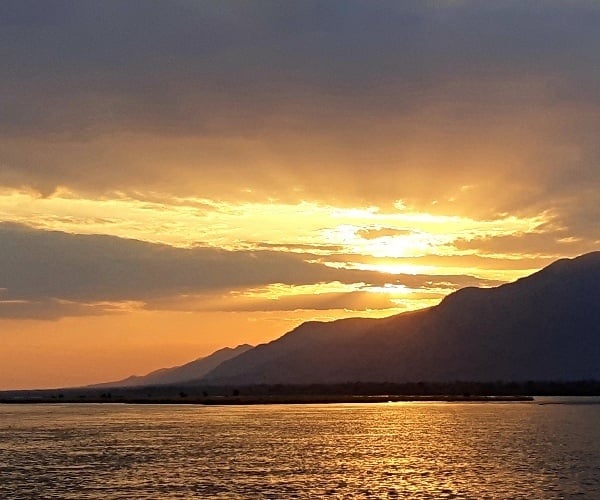
When David Livingstone reached the Lower Zambezi Valley in December 1855, he recorded in his journal the wild beauty of the place… “Hundreds of buffaloes and zebra grazed in the open space, and beneath the trees stood lordly elephants feeding majestically. The number of animals was quite astonishing. I wished I could have photographed a scene so seldom beheld…” Surrounded by the park’s magnificence we knew exactly how he had felt. As the day drew to a close, the sun sank low in the sky, turning the river to liquid gold. Elephants called from across the river, a pair of hippos fought noisily for territory, herons squawked as they roosted for the night. Gradually the world around us grew quiet. It was the perfect end, to a perfect day, in a perfect place.
Did you enjoy this article?
Receive similar content direct to your inbox.


This all looks so idyllic, those views across the Zambezi are so beautiful. I’ve always wanted to do a holiday like this. It’s an absolute dream.
I’ve never caught a fish that size in my life. I’m on the next plane to the Zambezi.
Hi Brian,
It’s strictly catch and release in the Lower Zambezi, so you can come and catch that very same fish… it’s back in the river and waiting for you 😊
Sarah
I’ve got to admit to being something of a safari addict and have done several.
Reading this makes me realise that next time I ought to take in a river like the Zambezi or some wetlands.
I’d still get my wildlife fix but there’s obviously a lot more to see on the river as well.
This must be close to being the perfect travel post. That first paragraph with its sights and smells almost takes me to the banks of the Zambezi. Great travel writing has you reaching out to pack your suitcase.
Thanks Liz,
You’ve made my day. What a nice thing to say.
I hope I’ve inspired you to get packing for a Safari!
Sarah